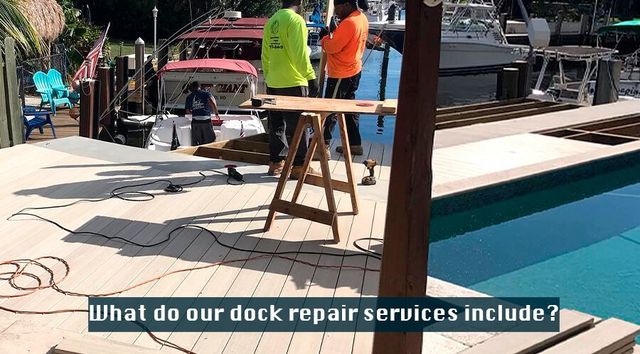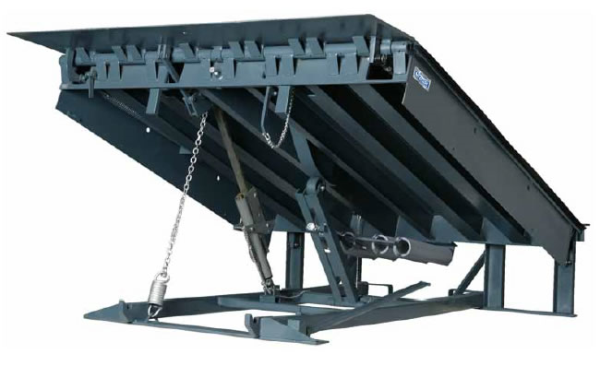Professional Insights on Long-Lasting Dock Repairs Solutions
Professional Insights on Long-Lasting Dock Repairs Solutions
Blog Article
Efficient Dock Fixing Techniques: Ensuring Structural Honesty
Making sure the structural stability of docks with effective repair service techniques is vital for the longevity and safety of marine facilities. This includes a multi-faceted strategy beginning with extensive assessments utilizing advanced innovations like sonar equipment and remotely ran cars (ROVs) to spot both visible and concealed problems. Consequently, selecting the appropriate repair service materials, such as corrosion-resistant alloys and composite products, is crucial for resilience. Architectural reinforcement methods, consisting of the execution of cross-bracing systems and load-distribution plates, play an important function in mitigating stress factors. The importance of these techniques ends up being apparent when exploring advanced repair service approaches and preventative maintenance techniques.
Examining Dock Damages
Analyzing dock damages is a crucial very first step in making certain the architectural honesty and safety and security of any type of docking center. This preliminary assessment involves a comprehensive inspection to determine both hidden and noticeable problems. Trick elements to take a look at consist of the dock's structure, pilings, outdoor decking, and hardware. Each part needs to be scrutinized for indications of wear, rot, deterioration, or other types of deterioration that might jeopardize the architectural integrity.
Architectural engineers or qualified examiners usually carry out these assessments utilizing specialized methods and tools. As an example, undersea evaluations could use sonar devices or from another location ran automobiles (ROVs) to identify immersed damage. Over water, visual assessments are matched by utilizing wetness meters and various other analysis tools to reveal underlying problems not promptly visible to the naked eye.

Finding Repair Service Products
Picking the proper repair service materials is a critical step in the dock restoration procedure, one that straight affects the long life and performance of the repaired structure. Material selection must be driven by factors such as environmental conditions, load-bearing requirements, and compatibility with existing dock elements.
In enhancement to wood, composite products are increasingly preferred because of their sturdiness and reduced upkeep demands. Composites, commonly made from a mix of plastic and wood fibers, provide exceptional resistance to rot, pests, and UV damage. For steel docks, picking corrosion-resistant alloys such as galvanized steel or marine-grade aluminum is important to protect against rust and make sure architectural integrity in saline water problems.
Epoxy materials and marine-grade sealers are vital for fixing splits and securing joints, providing a waterproof barrier and improving the dock's general strength. By meticulously choosing high-quality materials, dock repair work can achieve lasting outcomes, thereby protecting against future degradation and ensuring risk-free, trustworthy use.
Architectural Support Techniques
Effective structural reinforcement methods are important in guaranteeing the security and durability of dock repair work. One basic technique entails making use of steel or composite support bars (rebar) within concrete frameworks. Rebar gives added tensile strength, protecting against fractures and distributing loads a lot more uniformly. This technique is specifically reliable for anchors exposed to heavy why not find out more loads or harsh ecological problems.
One more necessary method is the application of fiber-reinforced polymers (FRP) These products use high strength-to-weight ratios and excellent resistance to deterioration, making them optimal for reinforcing concrete or wooden docks. FRP can be applied in sheets or strips and adhered with epoxy materials to boost structural integrity.
Supporting and anchoring systems likewise play a vital role in architectural reinforcement. Cross-bracing, utilizing steel or wooden beam of lights, can neutralize side pressures, minimizing persuading and activity. Anchoring systems, such as helical piers or driven heaps, supply a steady structure by moving lots to much deeper, a lot more steady dirt layers.
Finally, the combination of load-distribution plates can help disperse weight much more uniformly throughout the dock's surface, alleviating localized tension factors. These techniques collectively make sure that anchors continue to be risk-free and robust, efficient in holding up against the rigors of their functional setting.
Advanced Repair Techniques

Another sophisticated strategy involves undersea welding, which enables repair work to be conducted without the demand to dewater the location. This approach is especially advantageous for dealing with architectural problems in immersed dock components, making certain minimal interruption to procedures. Improved welding techniques, coupled with robotic systems, deliver look what i found precision and reliability, thus expanding the life expectancy of the dock.
Additionally, cathodic protection systems are executed to avoid deterioration in metallic dock frameworks. By utilizing sacrificial anodes or satisfied existing systems, these techniques properly minimize the electrochemical procedures that lead to product deterioration.
Finally, advanced monitoring innovations, such as architectural wellness tracking (SHM) systems, offer real-time data on the condition of dock frameworks. These systems allow proactive maintenance and prompt interventions, eventually ensuring the lasting structural stability of the dock.
Upkeep and Prevention
Maintenance and prevention are basic concepts that underpin the longevity and safety and security of dock frameworks. Regular evaluations are vital, enabling very early detection of deterioration, potential weak points, and environmental effects. An aggressive technique, involving regular look for corrosion, rot, and architectural changes, mitigates costly repairs and extends the dock's functional life.
Safety nets should consist of using safety layers to steel elements to defend against corrosion and making use of cured wood to withstand decay. In addition, making certain correct drainage and air flow can prevent water accumulation, which is an usual reason of architectural deterioration. Including quality products and sticking to maker standards during construction and repair work stages also play vital functions in enhancing longevity.

Educating employees in dock maintenance ideal practices ensures constant application of safety nets. Leveraging technical advances, such as drones for assessments and sensors for real-time tracking, can further improve maintenance efforts. By focusing on maintenance and avoidance, dock proprietors can ensure architectural honesty, operational safety and security, and affordable management over the dock's life expectancy.
Conclusion
In conclusion, preserving the architectural honesty of aquatic facilities necessitates extensive dock repair work techniques. Advanced repair service techniques, coupled with routine upkeep techniques, ensure the dock continues to be secure and functional under varied environmental problems.
Guaranteeing the structural honesty of anchors with reliable repair techniques is paramount for the longevity and security of aquatic facilities.Picking the appropriate repair products is an essential step in the dock remediation procedure, one that straight influences the longevity and performance of the repaired framework.Effective structural reinforcement techniques are essential in ensuring the stability and longevity of dock fixings. By focusing on maintenance and prevention, dock owners can make certain structural stability, operational security, and cost-effective monitoring over the dock's life expectancy.
In verdict, maintaining the structural stability of aquatic facilities necessitates thorough dock repair service methods.
Report this page